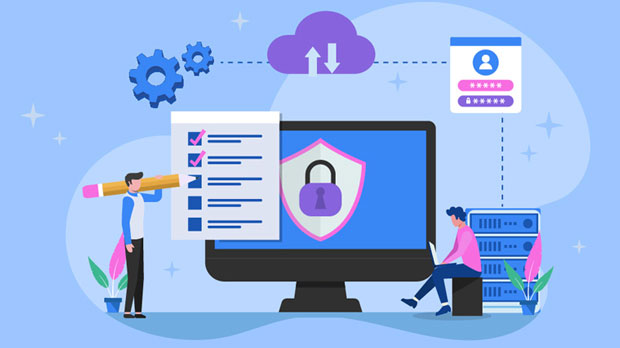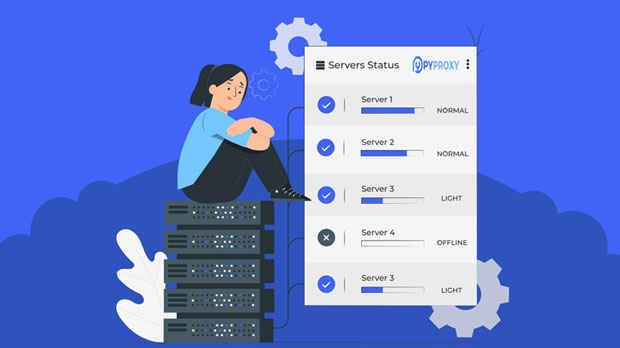In today’s world, where social media management is crucial for businesses, individuals, and organizations, choosing the right tools to optimize efficiency is essential. Two tools that stand out in this regard are PYPROXY and CroxyProxy. Both of these proxy services provide different functionalities and offer unique features for users who wish to manage social media more effectively, but their performance, scalability, and use cases vary significantly. This article will explore which of these two proxies is more efficient for social media management, helping you decide which tool aligns better with your needs. Introduction to Proxy Tools for Social Media ManagementSocial media management often involves tasks like scheduling posts, handling multiple accounts, analyzing engagement, and maintaining security. Proxy services play an important role in these processes by providing anonymity, protecting user data, and circumventing geo-restrictions. For managing social media accounts on a large scale, proxies allow you to automate actions while staying undetected by the platform's algorithms.Both PyProxy and CroxyProxy can be used for such tasks, but their underlying structures and methods of operation differ. To determine which one is more efficient, let’s examine the key features, benefits, and limitations of both tools in the context of social media management.PyProxy: Features, Benefits, and Use CasesPyProxy is a flexible proxy tool primarily designed for Python users and developers. It is commonly integrated with Python scripts to automate tasks such as scraping, botting, and managing social media accounts. PyProxy provides a reliable and customizable solution to handle proxy rotations, requests, and bypassing blocks. Let’s break down its strengths and how they apply to social media management:1. Automation and FlexibilityOne of PyProxy's strongest suits is its ability to integrate seamlessly into Python code. It can be used with custom scripts to automate tasks such as posting updates, liking posts, or commenting on different platforms. By utilizing PyProxy's rotating proxy servers, users can access social media platforms without being restricted by IP blocks or rate limits.For social media managers handling several accounts or working on campaigns, PyProxy allows for automation at scale. It supports Python libraries like Selenium or BeautifulSoup, which are frequently used in social media bots and data scraping. Therefore, its main strength lies in its ability to offer flexibility and scalability when developing custom automation systems.2. Data Scraping and AnalyticsIn addition to automation, PyProxy is often employed for social media data scraping. It can be used to extract insights from social media platforms such as Instagram or Twitter without the risk of being flagged as a bot. By rotating proxies with PyProxy, users can gather valuable data related to audience sentiment, competitor analysis, and user engagement metrics.The ability to gather large datasets without being blocked is crucial for social media managers who need to analyze trends and monitor brand mentions. PyProxy makes it easier to stay under the radar while collecting the necessary data for decision-making.3. Security and PrivacySecurity and privacy are significant concerns for anyone managing multiple social media accounts. With PyProxy, users can mask their IP addresses, protecting their personal data from being exposed. This anonymity is essential when managing multiple accounts or conducting operations across different geographical locations.PyProxy’s encrypted proxies offer another layer of security by preventing trackers or malicious agents from tracking the user’s activities, which is particularly useful for social media managers operating in sensitive or competitive environments.Limitations of PyProxyWhile PyProxy has numerous advantages, it is not without its limitations. For one, it requires a good understanding of Python and programming. Users who are not familiar with coding might find it challenging to fully leverage PyProxy's capabilities. Additionally, while it supports automation, users must carefully design their scripts to avoid detection by platform algorithms.CroxyProxy: Features, Benefits, and Use CasesCroxyProxy, on the other hand, is a more user-friendly proxy solution. It works directly through a web interface and does not require programming knowledge. CroxyProxy allows users to access social media platforms via a web proxy, making it easier to perform certain actions without the need for complex scripting.1. User-Friendliness and SimplicityUnlike PyProxy, which is geared towards developers, CroxyProxy offers a simple and easy-to-use interface. It’s ideal for users who do not want to engage in scripting but still require proxy support for managing social media. CroxyProxy can be used to access social media accounts, unblock content, and change the IP address with just a few clicks.For non-technical users, this ease of use makes CroxyProxy a practical option. It simplifies the proxy management process and offers a straightforward solution for those who just want to bypass restrictions and manage accounts on different platforms.2. Geo-Unblocking and Content AccessOne of the primary features of CroxyProxy is its ability to bypass geo-restrictions and unlock content that may be blocked in certain regions. This can be particularly useful for managing social media accounts that need to interact with users from specific locations or access regionally restricted content.For example, a business targeting global customers may want to tailor its content based on regional preferences. With CroxyProxy, social media managers can easily switch between different IP addresses and access localized content, offering more personalized interactions with the audience.3. Platform Compatibility and Cross-Device AccessCroxyProxy works on various devices, including desktops, tablets, and smartphones. This level of compatibility is crucial for social media managers who need to handle multiple platforms and devices while maintaining anonymity. Whether you are on the go or at your desk, CroxyProxy ensures you can access social media platforms securely and efficiently.Limitations of CroxyProxyWhile CroxyProxy is an excellent option for users who prefer simplicity, it also has some limitations. It is less customizable than PyProxy and does not provide the same level of control over automation and script integration. Additionally, CroxyProxy’s reliance on a web-based interface can sometimes limit its scalability for large-scale operations, especially for social media managers handling multiple accounts at once.Efficiency Comparison: PyProxy vs CroxyProxyNow that we’ve explored both tools, let’s evaluate which one is more efficient for social media management:- Scalability: PyProxy offers better scalability as it supports automation and integrates well with Python-based automation systems. It’s perfect for large-scale operations, while CroxyProxy is more suitable for smaller, simpler tasks.- Ease of Use: CroxyProxy is far easier to use, especially for non-technical users. It doesn’t require programming skills and can be accessed directly through a web interface, making it ideal for straightforward social media management tasks.- Customization and Automation: PyProxy excels in this area, offering greater customization and the ability to automate complex social media actions. CroxyProxy lacks this flexibility and is less capable of handling advanced automation.- Security: Both tools offer strong security features, but PyProxy’s advanced capabilities in handling IP rotation and encryption make it a better choice for users who need maximum privacy and security.Conclusion: Which Proxy is More Efficient for Social Media Management?Ultimately, the choice between PyProxy and CroxyProxy comes down to your specific needs. If you’re a social media manager who needs flexibility, automation, and scalability, PyProxy is the more efficient option. However, if you prioritize ease of use and simplicity over advanced features, CroxyProxy might be the better fit.Both tools have their merits, and the right choice will depend on the scale of your social media operations and your technical proficiency. Whether you choose PyProxy for its customizability or CroxyProxy for its user-friendly approach, both provide valuable solutions for managing social media efficiently.
Mar 21, 2025
![arrow]()




























































